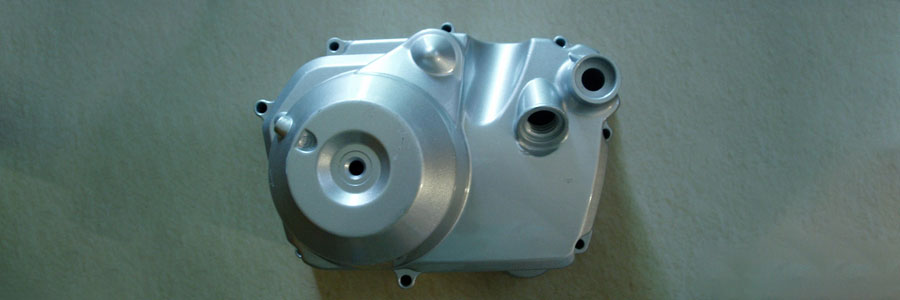Issues to be aware of aluminum alloy die casting production
Aluminum alloy die casting production introduced
| The process flow of rapid casting technology based on RP for metal molds and main error factors influencing mold's dimensional precision were introduced |
 With the continuous expansion of the application range of aluminum alloy die-casting products such as aluminum alloy in the market, aluminum alloy die-casting parts such as domestic aluminum alloys have developed rapidly in recent years. In the current market conditions, whether it will be restricted by certain factors, this is also a concern of many people in the industry. Die-cast aluminum alloy, it is also a die-casting part. The knowledge introduced below is also about die-casting parts. So what are the specifics?
With the continuous expansion of the application range of aluminum alloy die-casting products such as aluminum alloy in the market, aluminum alloy die-casting parts such as domestic aluminum alloys have developed rapidly in recent years. In the current market conditions, whether it will be restricted by certain factors, this is also a concern of many people in the industry. Die-cast aluminum alloy, it is also a die-casting part. The knowledge introduced below is also about die-casting parts. So what are the specifics?
1. Control of alloy composition Starting from the purchase of alloy ingots, alloy ingots must be based on ultra-high purity aluminum, plus alloy ingots made of ultra-high purity aluminum, magnesium and copper. The supplier has strict composition standards. High quality aluminum alloy is the guarantee for the production of high quality castings.
2. Purchasing the alloy ingots should ensure a clean and dry stacking area to avoid white rust when exposed to moisture for a long time, or to be contaminated by factory dirt to increase the generation of slag and increase metal loss. A clean factory environment is very effective in controlling the composition of the alloy.
3. The ratio of new material to nozzle and other materials is not more than 50%, and the new material is: old material = 70:30. Aluminum and magnesium are gradually reduced in continuous remelting alloys.
4. When the nozzle material is remelted, it is necessary to strictly control the remelting temperature not to exceed 430 °C to avoid the loss of aluminum and magnesium.
5. The conditional die-casting factory preferably uses a concentrated furnace to melt the aluminum alloy, so that the alloy ingot and the recycled material are evenly proportioned, and the flux can be used more effectively, so that the alloy composition and temperature are kept uniform and stable. Electroplating waste and fines should be separated into separate furnaces.
Many times, it is not possible to pay attention to the above problems to make high-quality aluminum alloy die-casting parts. If the following defects occur in aluminum alloy die-casting parts, some treatments are provided below.
Since each defect is caused by a number of different influencing factors, it is necessary to solve the problem in actual production. In the face of many reasons, is it the first to adjust the machine? Or do you want to refuel? Or modify the mold first? The degree of ease, first simplified and then complicated to deal with, the order:
- Clean the parting surface, clean the cavity, clean the ejector; improve the coating, improve the spraying process; increase the clamping force and increase the amount of pouring metal. These measures can be implemented by simple operations.
- Adjust process parameters, injection force, injection speed, filling time, mold opening time, pouring temperature, mold temperature, etc.
- Refueling, selecting high-quality aluminum alloy ingots, changing the ratio of new materials to recycled materials, and improving the melting process.
-
Modify the mold, modify the pouring system, increase the ingate, add overflow tank, exhaust slot, etc.
For example, the reasons why the die casting produces flashing are:
- Die casting machine problem: The clamping force is not adjusted correctly.
- Process problem: the injection speed is too high, and the pressure shock peak is too high.
- Mold problem: deformation, debris on the parting surface, inlays and sliders are not flushed, and the template strength is not enough.
|
PTJ Machining Capabilities |
|
Automatic Bar Machining – Multi-spindle cam automatic screw machines CNC Turning – CNC delivers peak cost efficiency in shorter volumes, as well as high capacity production of mechanically simple components Custom Machining - with up to 12 axes of control Multi Spindle Machining- ISO 9001:2015 certified Screw Machine Products – The number of customized production parts per hour can reach 10000pcs Swiss Machining – with up to 9 axes of CNC control, to produce precision components with complex geometries in one operation High Volume Machining – 100 Advanced Production Turning Bar Automatics On-line and Ready CNC Milling - Machining Fully compliant with the exacting requirements of our customers 5 axis (11 axis) Machining – Tolerance | 0.1mm alignment |
What Can we help you do next?
∇ Get more information about cnc machining Shop
→Case study-Find out what we have done.
→Ralated tips about cnc machining services
By PTJ Manufacturing Shop|Categories: Blog|Tags: cnc milling services, cnc turning services, milling parts, turning parts, machining parts, special parts,faqs,technical news,company news,material news |Comments Off
